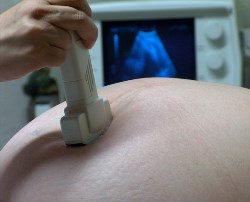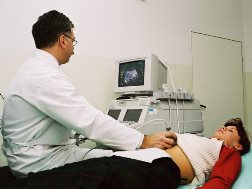How to Select the Best Ultrasound Tech Degree Program near Stanford Montana
 Now that you have decided to obtain an ultrasound technician degree near Stanford MT, the next step is to begin the process of choosing a college. To begin with, you need to find the ideal program that will furnish the appropriate training to become a qualified professional. And since some states do require that sonographers be either certified or licensed, depending on your residence you may also need preparation to pass a licensing or certification examination. So it’s extremely important that you research each program so that you can assess and compare your alternatives. But just where does one begin? Many students will begin by looking for schools that are within commuting distance of their homes and then by comparing tuition. Naturally cost and location must be taken into account when making a decision, but there are additional important factors also. For example, if the ultrasound technician schools have earned accreditation or if they offer internship programs. These and additional qualifications will be covered more in depth later in this article. But to start with, let’s review what an ultrasound tech does and the degrees and online education programs that are available.
Now that you have decided to obtain an ultrasound technician degree near Stanford MT, the next step is to begin the process of choosing a college. To begin with, you need to find the ideal program that will furnish the appropriate training to become a qualified professional. And since some states do require that sonographers be either certified or licensed, depending on your residence you may also need preparation to pass a licensing or certification examination. So it’s extremely important that you research each program so that you can assess and compare your alternatives. But just where does one begin? Many students will begin by looking for schools that are within commuting distance of their homes and then by comparing tuition. Naturally cost and location must be taken into account when making a decision, but there are additional important factors also. For example, if the ultrasound technician schools have earned accreditation or if they offer internship programs. These and additional qualifications will be covered more in depth later in this article. But to start with, let’s review what an ultrasound tech does and the degrees and online education programs that are available.
Click Here to Get Free Information on Ultrasound Technician Schools!
Sonogram Tech Work Summary
 There are several acceptable titles for ultrasound techs (technicians). They are also referred to as ultrasound technologists, sonogram techs, and diagnostic medical sonographers (or just sonographers). No matter what their title is, they all have the same primary job description, which is to perform diagnostic ultrasound procedures on patients. While a number of techs practice as generalists there are specialties within the profession, for instance in pediatrics and cardiology. Most work in Stanford MT clinics, hospitals, private practices or outpatient diagnostic imaging centers. Routine daily work functions of a sonogram technician may involve:
There are several acceptable titles for ultrasound techs (technicians). They are also referred to as ultrasound technologists, sonogram techs, and diagnostic medical sonographers (or just sonographers). No matter what their title is, they all have the same primary job description, which is to perform diagnostic ultrasound procedures on patients. While a number of techs practice as generalists there are specialties within the profession, for instance in pediatrics and cardiology. Most work in Stanford MT clinics, hospitals, private practices or outpatient diagnostic imaging centers. Routine daily work functions of a sonogram technician may involve:
- Keeping records of patient medical histories and details of each procedure
- Counseling patients by explaining the procedures and answering questions
- Preparing the ultrasound machines for usage and then cleaning and recalibrating them
- Escorting patients to treatment rooms and ensuring their comfort
- Operating equipment while minimizing patient exposure to sound waves
- Reviewing the results and determining need for further testing
Sonographers must regularly evaluate the performance and safety of their equipment. They also are held to a high ethical standard and code of conduct as health practitioners. In order to maintain that level of professionalism and remain up to date with medical knowledge, they are mandated to enroll in continuing education training on a regular basis.
Ultrasound Tech Degree Programs Offered
 Ultrasound tech students have the option to earn either an Associate or a Bachelor’s Degree. An Associate Degree will usually require around 18 months to 2 years to complete based upon the course load and program. A Bachelor’s Degree will require more time at as long as 4 years to complete. Another alternative for individuals who have previously obtained a college degree is a post graduate certificate program. If you have received a Bachelor’s Degree in any major or an Associate Degree in a related health field, you can enroll in a certificate program that will take only 12 to 18 months to complete. Something to bear in mind is that most sonographer colleges do have a clinical training component as part of their course of study. It often may be satisfied by entering into an internship program which numerous colleges organize with Stanford MT clinics and hospitals. Once you have graduated from one of the degree or certificate programs, you will then have to fulfill the certification or licensing requirements in Montana or whichever state you elect to work in.
Ultrasound tech students have the option to earn either an Associate or a Bachelor’s Degree. An Associate Degree will usually require around 18 months to 2 years to complete based upon the course load and program. A Bachelor’s Degree will require more time at as long as 4 years to complete. Another alternative for individuals who have previously obtained a college degree is a post graduate certificate program. If you have received a Bachelor’s Degree in any major or an Associate Degree in a related health field, you can enroll in a certificate program that will take only 12 to 18 months to complete. Something to bear in mind is that most sonographer colleges do have a clinical training component as part of their course of study. It often may be satisfied by entering into an internship program which numerous colleges organize with Stanford MT clinics and hospitals. Once you have graduated from one of the degree or certificate programs, you will then have to fulfill the certification or licensing requirements in Montana or whichever state you elect to work in.
Online Sonogram Tech Classes
 As aforementioned, almost all ultrasound tech colleges have a clinical component to their programs. So although you can obtain a certificate or degree online, a substantial part of the training will be either conducted in an on campus laboratory or at an authorized off campus facility. Clinical training can usually be satisfied through an internship at a local Stanford MT hospital, outpatient clinic or family practice. However the rest of the training and classes may be accessed online in your Stanford home. This is especially convenient for those individuals that continue working while earning their degrees. In addition online schools are often less costly than on campus options. Expenses for commuting and study materials can be reduced as well. But similarly as with every ultrasound tech college you are reviewing, verify that the online school you choose is accredited. One of the most highly respected accrediting agencies is the Commission on Accreditation of Allied Health Education Programs (CAAHEP). Accreditation is particularly significant for licensing, certification and job placement (more on accreditation later). So if you are disciplined enough to attend classes away from the classroom in the comfort of your own home, then an online degree could be the right choice for you.
As aforementioned, almost all ultrasound tech colleges have a clinical component to their programs. So although you can obtain a certificate or degree online, a substantial part of the training will be either conducted in an on campus laboratory or at an authorized off campus facility. Clinical training can usually be satisfied through an internship at a local Stanford MT hospital, outpatient clinic or family practice. However the rest of the training and classes may be accessed online in your Stanford home. This is especially convenient for those individuals that continue working while earning their degrees. In addition online schools are often less costly than on campus options. Expenses for commuting and study materials can be reduced as well. But similarly as with every ultrasound tech college you are reviewing, verify that the online school you choose is accredited. One of the most highly respected accrediting agencies is the Commission on Accreditation of Allied Health Education Programs (CAAHEP). Accreditation is particularly significant for licensing, certification and job placement (more on accreditation later). So if you are disciplined enough to attend classes away from the classroom in the comfort of your own home, then an online degree could be the right choice for you.
Topics to Ask Sonogram Tech Colleges
 Once you have decided on which degree or certificate that you would like to obtain, you can initiate the process of reviewing and comparing sonogram tech schools. You will first probably want to decide whether you will attend classes online or commute to a school campus in the Stanford MT area. Obviously location will be critical if you select the latter, and the cost of tuition no doubt will be an important qualifier also. But there are other variables that you should also take into consideration, for instance if the schools are accredited and if they provide internship programs. So in order to complete your due diligence so that you can arrive at your ultimate selection, below are several questions that you may want to ask each sonographer college before deciding.
Once you have decided on which degree or certificate that you would like to obtain, you can initiate the process of reviewing and comparing sonogram tech schools. You will first probably want to decide whether you will attend classes online or commute to a school campus in the Stanford MT area. Obviously location will be critical if you select the latter, and the cost of tuition no doubt will be an important qualifier also. But there are other variables that you should also take into consideration, for instance if the schools are accredited and if they provide internship programs. So in order to complete your due diligence so that you can arrive at your ultimate selection, below are several questions that you may want to ask each sonographer college before deciding.
Are the Sonogram Tech Programs Accredited? Most sonogram technician colleges have earned some type of accreditation, whether regional or national. Nevertheless, it’s still imperative to verify that the program and school are accredited. Among the most highly respected accrediting organizations in the field of sonography is the Joint Review Committee on Education in Diagnostic Medical Sonography (JRC-DMS). Schools earning accreditation from the JRC-DMS have undergone an extensive examination of their instructors and educational materials. If the school is online it can also earn accreditation from the Distance Education and Training Council, which targets online or distance learning. All accrediting organizations should be recognized by the U.S. Department of Education or the Council on Higher Education Accreditation. Besides guaranteeing a premium education, accreditation will also help in acquiring financial assistance and student loans, which are frequently not available for non-accredited programs. Accreditation might also be a pre-requisite for licensing and certification as required. And many Stanford MT employers will only hire a graduate of an accredited school for entry-level jobs.
Are Internships Provided? Ask if the sonogram tech schools you are assessing have associations with Stanford MT hospitals or clinics for internship programs. Not only are internships an excellent way to get hands on experience in a clinical environment, they are also a way to fulfill the clinical training requirement for most programs. As an ancillary benefit, they can help graduates and students develop professional relationships in the Stanford healthcare community and assist with job placement.
Is Job Placement Assistance provided? You will probably want to secure employment quickly after graduating, but getting that initial job in a new field can be challenging without help. Find out if the sonographer schools you are considering have job placement programs and what their success rates are. Rapid and high placement rates are a good indication that the schools have large networks and great relationships with Montana healthcare employers. It also confirms that their graduates are well regarded and sought after.
Where is the School Located? For a number of students, the school they select will need to be within driving distance of their Stanford MT residence. Those who have chosen to attend online classes obviously will not have to trouble themselves with the location of the campus. However, the availability of area internships will be of importance. Something to keep in mind is that if you choose to enroll in a college that is out of state or perhaps out of your local area, you might be required to pay a higher tuition. State colleges usually charge higher tuitions for out of state residents. And community colleges usually charge a higher tuition for those students that live outside of their districts.
How Big are the Classes ? Unless you are the sort of student that likes to sit way in the rear of the classroom or get lost in the crowd, you will undoubtedly prefer a small class size. Small classes permit more individual participation and one-on-one instruction. Ask the colleges you are looking at what the average student to teacher ratio is for their classes. If practical you may prefer to sit in on one or more classes before making your final decision. This will also give you an opportunity to converse with some of the instructors and students to get their opinions regarding the sonogram tech program also.
Can the College Accommodate your Schedule? And finally you need to confirm that the ultrasound tech program you finally choose can furnish the class schedule you need. This is particularly crucial if you decide to continue working while you attend classes. If you must schedule evening or weekend classes in the Stanford MT area, confirm that they are offered. If you can only attend part-time, check if that is an alternative and how many credit hours or courses you would have to carry. Also, ask what the procedure is for making up any classes that you might miss because of illness, work or family emergencies.
How To Become A Sonographer Stanford Montana
 Choosing the right ultrasound tech certificate or degree program is a crucial first step to commencing a gratifying new profession furnishing diagnostic services to patients. Sonographer schools require that you have earned a high school diploma or equivalent. In addition to satisfying academic standards, you must be in at least fairly good physical health, capable of standing for prolonged time frames with the ability to routinely lift weights of 50 pounds or more, as is it frequently necessary to position patients and maneuver heavy machinery. Other helpful talents include technical aptitude, the ability to stay calm when confronted by an angry or anxious patient and the ability to communicate clearly and compassionately. You originally came to this website due to an interest in How To Become A Sonographer and wanting more information on Diagnostic Medical Sonography Classes. However, as we have covered in this article, there are several questions that you should ask each school you are considering. This holds true whether you select an online program or commute to the school campus to attend classes. And by asking the appropriate questions so that you can compare each program, you will be able to narrow down your options until you are left with the ideal school for your education. And with the right training, discipline and motivation to succeed, you can reach your objective to work as an ultrasound technologist in Stanford MT.
Choosing the right ultrasound tech certificate or degree program is a crucial first step to commencing a gratifying new profession furnishing diagnostic services to patients. Sonographer schools require that you have earned a high school diploma or equivalent. In addition to satisfying academic standards, you must be in at least fairly good physical health, capable of standing for prolonged time frames with the ability to routinely lift weights of 50 pounds or more, as is it frequently necessary to position patients and maneuver heavy machinery. Other helpful talents include technical aptitude, the ability to stay calm when confronted by an angry or anxious patient and the ability to communicate clearly and compassionately. You originally came to this website due to an interest in How To Become A Sonographer and wanting more information on Diagnostic Medical Sonography Classes. However, as we have covered in this article, there are several questions that you should ask each school you are considering. This holds true whether you select an online program or commute to the school campus to attend classes. And by asking the appropriate questions so that you can compare each program, you will be able to narrow down your options until you are left with the ideal school for your education. And with the right training, discipline and motivation to succeed, you can reach your objective to work as an ultrasound technologist in Stanford MT.
More Ultrasound Locations in Montana
341st Missile Wing LGM-30 Minuteman Missile Launch Sites
The 341st Missile Wing was the first United States Air Force LGM-30 Minuteman ICBM wing. On 15 July 1961, the 341st was reactivated, and a year later, in late July 1962, the first LGM-30A Minuteman I arrived and was placed at the Alpha-9 launch facility. The 10th SMS accepted its final flight on 28 February 1963. Two months later, the 12th SMS became 100 percent combat ready. In July, the 490th SMS became fully operational, giving the 341st SMW responsibility for 150 silos. A fourth squadron, the 564th, a former SM-65D Atlas unit, stood up on 1 April 1966 with the LGM-30F Minuteman II.
Beginning in 1967, all Minuteman I A and B models were replaced by the Minuteman II. The upgrade was completed by June 1969. In 1975, the 564th SMS switched from the Minuteman II to the LGM-30G Minuteman III model.
On 28 September 1991, President Bush ordered all Minuteman IIs off alert status. This order affected three-quarters of the 200 ICBMs stationed at Malmstrom. From 1992 to 1994, the Air Force removed 150 Minuteman II missiles from their silos to comply with the pending START I Treaty. The 10th, 12th and 490th silos were upgraded to receive Minuteman III missiles, joining the 50 Minuteman III missiles already on alert status with the 564th
